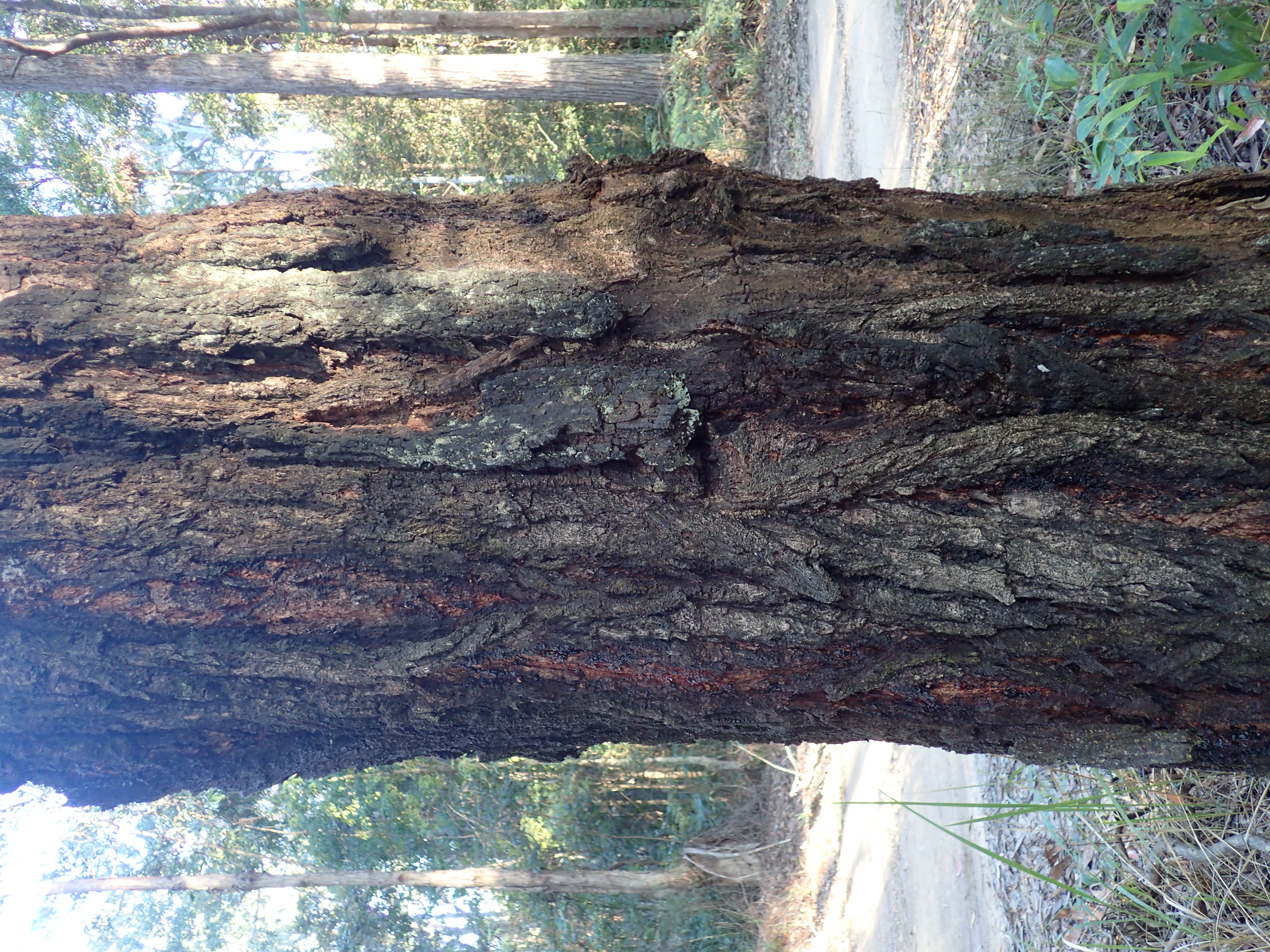Eucalyptus Fusiformis on:
[Wikipedia]
[Google]
[Amazon]
''Eucalyptus fusiformis'', commonly known as the grey ironbark or Nambucca ironbark is a tree that is 

endemic
Endemism is the state of a species being found in a single defined geographic location, such as an island, state, nation, country or other defined zone; organisms that are indigenous to a place are not endemic to it if they are also found elsew ...
to eastern Australia. It has thick, blackish, "ironbark
Ironbark is a common name of a number of species in three taxonomic groups within the genus ''Eucalyptus'' that have dark, deeply furrowed bark.
Instead of being shed annually as in many of the other species of ''Eucalyptus'', the dead bark accu ...
" on the trunk and branches, lance-shaped to curved adult leaves, flower buds in groups of seven, white flowers and conical to pear-shaped fruit.

Description
''Eucalyptus fusiformis'' is a tree that typically grows to a height of and forms alignotuber
A lignotuber is a woody swelling of the root crown possessed by some plants as a protection against destruction of the plant stem, such as by fire. Other woody plants may develop basal burls as a similar survival strategy, often as a response t ...
. It has thick, hard, greyish ironbark on the trunk and on branches more than about in diameter. Young plants and coppice
Coppicing is a traditional method of woodland management which exploits the capacity of many species of trees to put out new shoots from their stump or roots if cut down. In a coppiced wood, which is called a copse, young tree stems are repeated ...
regrowth have stems that are more or less square in cross-section and leaves that are petiolate, egg-shaped to broadly lance-shaped, long and wide. Adult leaves are lance-shaped to curved, the same dull green on both sides, long and wide on a petiole long. The flower buds are arranged in groups of seven on the ends of branchlets on a compound peduncle long, the individual buds on pedicels
In botany, a pedicel is a stem that attaches a single flower to the inflorescence. Such inflorescences are described as ''pedicellate''.
Description
Pedicel refers to a structure connecting a single flower to its inflorescence. In the absenc ...
long. Mature buds are oval to spindle-shaped, long and wide with a conical operculum. Flowering occurs between May and August and the flowers are white. The fruit is a woody hemispherical, conical, pear-shaped or oval capsule long and wide with the valves below rim level.
Taxonomy and naming
''Eucalyptus fusiformis'' was first formally described in 1987 by Douglas Boland and David Kleinig in the journal ''Brunonia
''Brunonia australis'', commonly known as the blue pincushion or native cornflower, is a perennial or annual herb that grows widely across Australia. It is found in woodlands, open forest and sand plains. In Cronquist's classification scheme ...
''. The specific epithet
In taxonomy, binomial nomenclature ("two-term naming system"), also called nomenclature ("two-name naming system") or binary nomenclature, is a formal system of naming species of living things by giving each a name composed of two parts, bot ...
(''fusiformis'') is derived from Latin
Latin (, or , ) is a classical language belonging to the Italic branch of the Indo-European languages. Latin was originally a dialect spoken in the lower Tiber area (then known as Latium) around present-day Rome, but through the power of the ...
words alluding to the fusiform or spindle-shaped flower buds.
Distribution and habitat
This ironbark grows in forest from about Kempsey in northern New South Wales toMount Barney
Mount Barney is a mountain within the Scenic Rim Region in south-east Queensland, Australia. It lies approximately south-west of Brisbane, not far from the Queensland - New South Wales border, and forms part of the McPherson Range. It is a p ...
in southeastern Queensland.
References
{{Taxonbar, from=Q15400666 fusiformis Myrtales of Australia Flora of New South Wales Flora of Queensland Trees of Australia Plants described in 1987